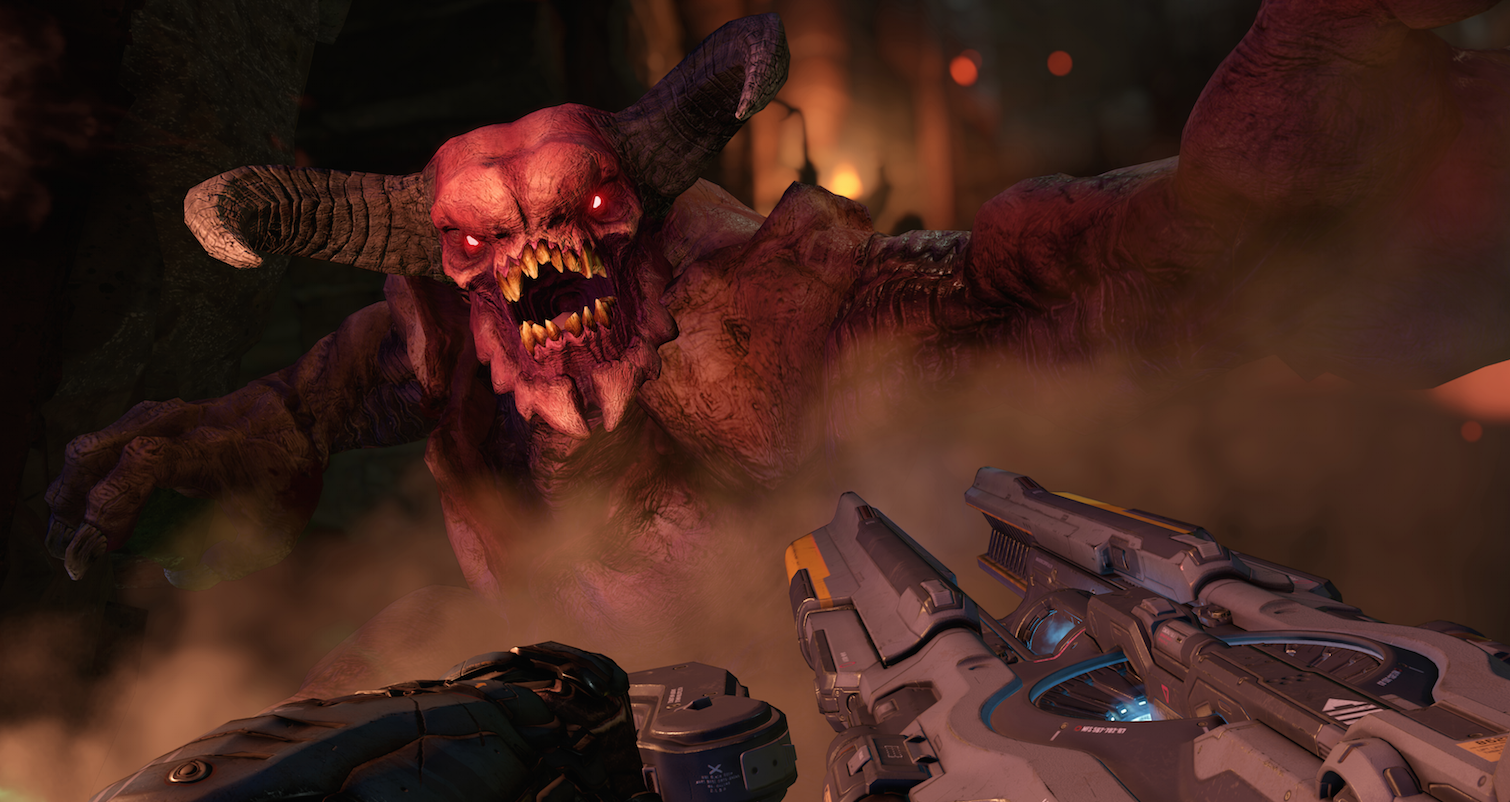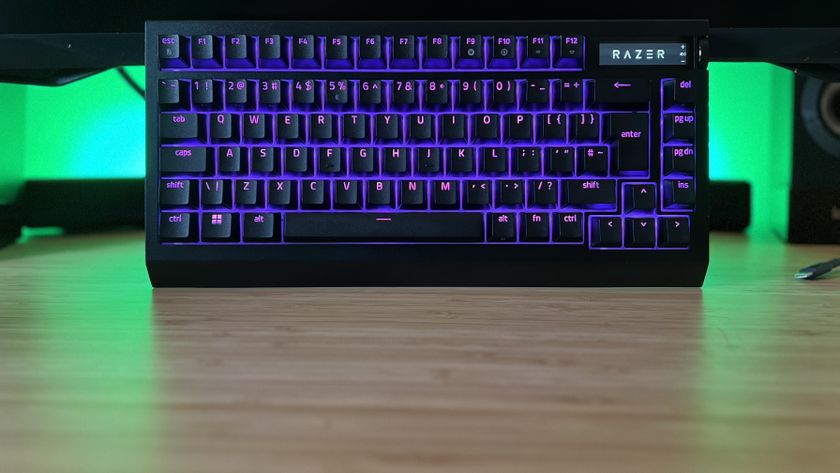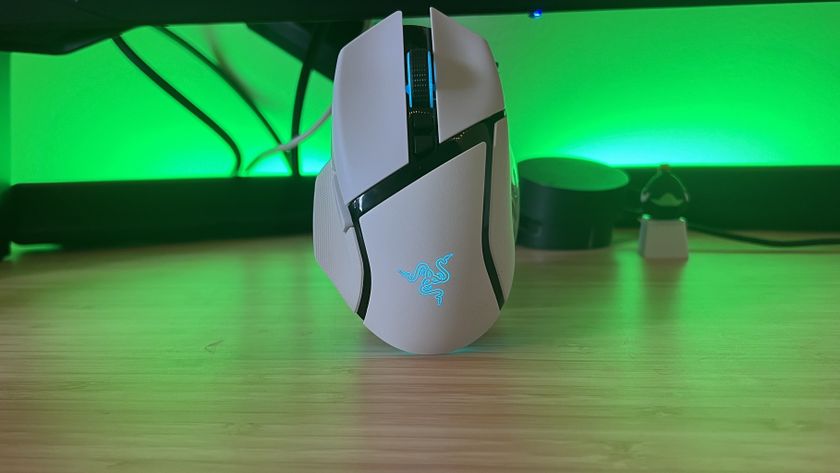12DOVE Verdict
Intelligent, involved, and relentlessly exhilarating, now, just as in '93, the most exciting FPS around is a game called Doom.
Pros
- +
The most exhilarating and intelligent expression of FPS in years.
- +
Multiplayer is endlessly playable, smart, brutal fun.
- +
SnapMap is powerful and accessible, and could lead to great content for years.
Cons
- -
The campaign’s opening hour holds back Doom’s real scope and quality.
Why you can trust 12DOVE
Doom’s first couple of missions deliver exactly what most of us expected from a modern iteration of the series. Fast, ferocious, movement-driven, close-range combat, running through an A-to-B level structure entwining multiple branching paths and winding levels of verticality. A pistol. A shotgun. A Doomguy. A fountain of zombies, Imps, and plasma-throwing heavies. It’s brilliant. It’s fun. It’s immediate. It’s fast, and ungodly smooth, and it’s instantly, goosebumpingly gratifying.
But it’s a lie.
It’s a noob-school. It’s the shallow end. It’s training wheels. From its very start Doom already feels just like we hoped it would, but it really hasn’t done shit yet. Tear through the prologue, shoot, detonate and skull-crush your way through the first proper mission, and you’ll discover that there was nothing proper about it at all. You’ll get into a new environment, the map will explode out in every direction at the same time, and Doom will really start to show what it’s all about. Because that vast, omni-directional, deeply nuanced layout in front of you is a playable metaphor for everything Doom is.
Doom is a game about exploration. It’s also about expression and vitality. I use all three of those words in every sense they have, and apply them to both the literal process of playing Doom and the game’s entire underpinning philosophy. It’s a game that understands the raw essence of the first-person shooter on a fundamental level, and presents it in every new way it can through every moment and mode it has. It delivers, it explores, and it never, ever stops.
Its core combat is near-flawless. Fights in Doom aren’t about lining up targets and pressing buttons to make them go away, manipulating a simulated environment from the outside. Every battle in Doom is a big organic mass, pulsating, shifting, changing and reshaping. And all of it happens in direct, unmistakable response to you, acting, interacting and reacting in the middle of it. Doom knows you’re there, and it never ceases to let you know it. It feels alive like no other shooter I’ve played in years.
After this (relatively) gentle opening, things escalate exponentially, but by way of excellent, insightful pacing that ensures you’re always playing at the peak of your current abilities, but never pushed beyond them, however insurmountable the odds might at first look. This kind of nuanced, interactive ecosystem is at its best when you're surfing the top of the wave, so Doom makes sure you are.
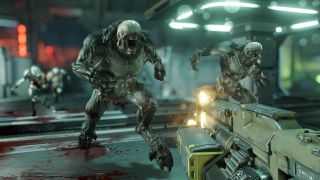
Every enemy is dangerous. Every one is powerful. But you're more powerful, if you push yourself. In Doom, the difference between swift, bloody defeat and a triumphant, resonant domination of the battlefield is simply resolve, gusto, and a willingness to grab the fight by the throat and run it into a wall, screaming in its face. You push, you win, you learn, you grow, and Doom keeps giving you more to work with. It’s testament to the pitch-perfect introduction of new enemies and possibilities that every hour or so you’ll find that the creature you once saw as a horrifying boss now dominates your thoughts no more than the once-important ex you thought you’d never get over, but then did.
Doom doesn’t give you regenerating health. It gives you something better. The ability and responsibility to manage your own survival. Health packs and armour pick-ups are scattered around the world, but the real meat with which you’ll sustain yourself comes, as everything else does, through your own actions. The Glory Kill system – which delivers immediate health boosts in reward for brutally satisfying melee kills once you’ve softened up an enemy – is a marvellous piece of design, ensuring marathon runs against seemingly impossible onslaughts as a long as you maintain staunch environmental awareness and a constantly vigilant ability to balance the need to kill any given demon against how useful it may be as a resource later on.
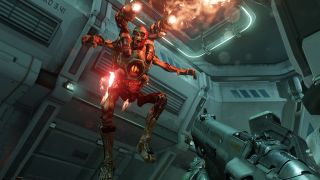
Similarly, the chainsaw is no longer a melee weapon, but a tool. It will kill virtually any monster you apply it to as long as you keep it topped up with enough fuel – bigger quarry requires more reserves – and will spill guts and a huge burst of ammo from every beast split open. The acts of moving and killing – and in Doom’s frenetic, kinectic warzone the two are inseparable – are fundamental, but they also need to be shaped and managed around an blade-sharp awareness of opportunity and survival.
And you will need to do all of these things. Because Doom’s enemies are no less purposeful than you. There’s no monster without reason or intent here. Every one – from shambling resource-bag zombie, to rampaging Hell Knight, to rocket-slinging, air-support Revenant – is a complementary part of a gore-drenched puzzle box, each with its own part to play and its own way of reshaping both the overall battle and the actions of its allies. Fortunately, every one of your weapons follows suit in retaliation. And that’s before you even start down Doom’s game-changing upgrade path.
The combat shotgun starts out as a close-range duelling weapon, perfect for engaging in a circle-strafing waltz of death with a leaping, bounding Knight, but mod it out with a grenade launcher, and suddenly it’s also a tool for maintaining the medium-range breathing room needed to focus on that dance for its duration. The plasma rifle starts as a decent, rapid-fire crowd-control tool, but add an area-of-effect stun shot, and you have a way of stalling the relentless attack of Hell’s bigger warriors for the few, blessed seconds you need to clear some space and mount a counter-offensive. The rocket-launcher becomes a manual detonation tool for placing tactical explosions anywhere you damn well wish. The machine gun becomes an over-penetrating sniper rifle for decisively opening paths straight through the middle of the storm.
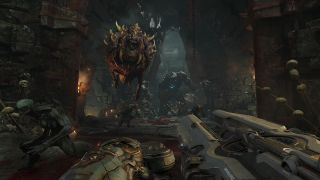
Not that any of these abilities are just handed to you. The currency to unlock and upgrade is scattered throughout Doom via myriad different opportunities to explore the game in new ways. Hidden Rune Trials deliver equippable, passive buffs in exchange for the completion of task rooms giving new spins on Doom’s finely tuned core systems – taking down a tough escalation of enemies with no health, say, or speed-running a combination of shooting and platforming – while physical exploration of Doom’s spiralling level design reaps even greater rewards.
And you’ll want to hunt down these collectibles and upgrade points for reasons beyond their immediate value. The simple act of investigation, traversal and discovery is greatly enjoyable in itself. Doom’s levels take in (branching) point-to-point designs, entirely non-linear environments, and a fair few possibilities in between, with secret rooms and obscured passageways hidden in plain sight throughout. It’s easily possible to spend upward of an hour rinsing out and relearning each of Doom’s levels once you’ve killed everything within them, and I’d strongly recommend that you do. Their design is so smartly rewarding and the act of deciphering and navigating their invisible paths upon paths so much fun – thanks to the sheer joy of movement at hand – that Doom is often as legitimate an exploration platformer as it is a shooter.
But the campaign, as towering an achievement as it is, is just one part. Doom’s multiplayer, which combines the campaign’s intimate ferocity with Quake’s fast, high-flying aerial element, is as accessible and compulsive as any I’ve played this generation. It has a levelling system, but its weapon unlocks are complete within a couple of hours, in truth only in place to drip-feed the potential of wildly different weapon strategies without over-facing the player. At heart, this is a multiplayer mode that exists to be played, not ground through or ‘completed’. And there’s plenty to play with.
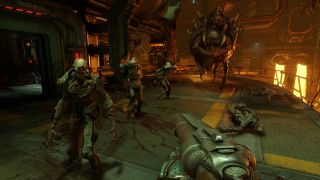
As exciting as the guns – which take in the campaign roster and a few more – are to use against other people, each has specific purposes and weaknesses, meaning that real power comes through a combination of complementary load-outs and personal play-style. Tinkering and experimenting with new combined weapons and equipment systems continually reworks how the game plays in interesting and exciting ways, and there’s no such thing as a right answer except for the one that gives you the most fun and success. Personally I favour the plasma rifle’s slow-burn area-of-effect shot followed by a couple of hard shotgun hits, but you might have just as much success combining the machine gun and the rocket launcher.
While Doom smoothes off the traditional arena shooter’s less welcoming edges – load-outs mean that the camping of weapon spawn points is no longer a quick path to dominance – it keeps its tactical spirit alive in other, friendlier ways. The timed drop of the Demon Rune allows the fast-acting to effectively become a boss unit for a limited time, rampaging around in monstrous form and inciting frenzied, focused battles of survival and map control. Limited-ammo power weapons such as the Gauss Cannon and the chainsaw can only be obtained through timed spawns, and strategic accrual can swiftly nullify a demon or amplify its reign of terror to horrifying degrees, depending on who holds them. Ultimately though, Doom’s multiplayer is so open, so driven by cat-and-mouse smarts and thoughtful, on-the-fly decision making, that the only thing that truly determines success is creative enthusiasm. And whatever the outcome, the path to it is always spectacular.
It doesn’t end there, either. In fact in a way, it only starts. Because Doom’s final – and possibly most expansive – exploration comes with SnapMap, a user-generated content suite that intends to do for modern, console-dominated FPS what modding did for Doom ‘93 on the PC. Far (far) beyond a level editor, it allows the modification and manipulation of everything from AI behaviour, to event scripting, to lighting and ambient sound design, to rule-sets, win conditions, and environmental challenges. It’s a powerful proposition, and an initially complex one too, but all of its versatility is expressed through easy to comprehend, visual logic chains, which can be tweaked and physically manipulated as you potter around your levels in first-person.
It’s as close to drag-and-drop game design as is possible in a system so deep, but any remaining intimidation inherent to that depth is swiftly reduced by the inspired Snap Puzzle tutorial feature. Here, SnapMap drops you into a series of rooms and gives you an impossible gameplay task in each. You might have to kill five enemies simultaneously, without inflicting any non-lethal damage. Or later, asked to trigger a floor-switch you can’t reach, or grab an item floating high above a lethal pit of gas that can’t be jumped. You’ll complete these challenges by playing them, but first you’ll have to effectively code your way out of them, changing the rules and systems at play in order to create viable gameplay or clever cheats.
It’s the game design equivalent of Captain Kirk rigging the Kobayashi Maru, and its blend of worked theory and active gameplay is a hell of an effective – and legitimately fun – way to learn. After an evening with SnapMap, I confidently understood how to build a complex, Raid-style combat puzzle, and have a strong grasp of how to make heavily scripted survival-horror too. I will complete both of these things over the coming months, and a lot more besides.
As, hopefully, will many others. Great maps, levels, and brand new game modes are already coming out of the community, meaning that SnapMap might just continue Doom’s own mission of FPS exploration, long after we’ve all finished its campaign. I really do hope so. Because this a game so good that you won’t want it to end, and so it would be really rather perfect if its last gift was to ensure that it never actually does.
More info
| Platform | "PC","GBA","PS1" |
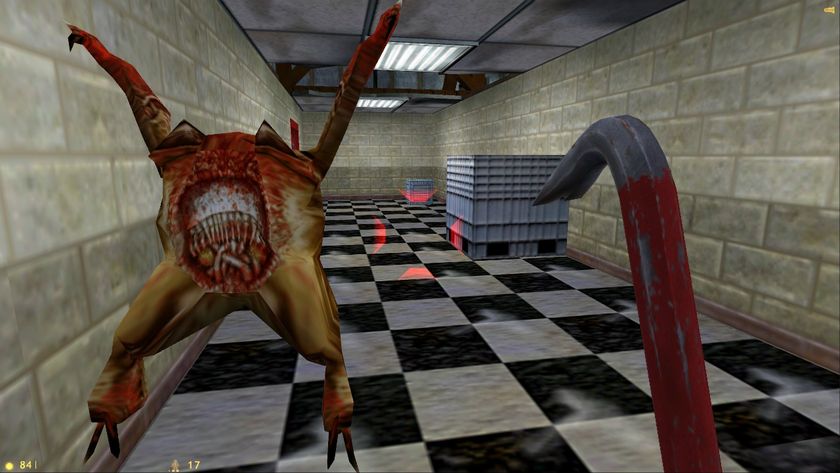
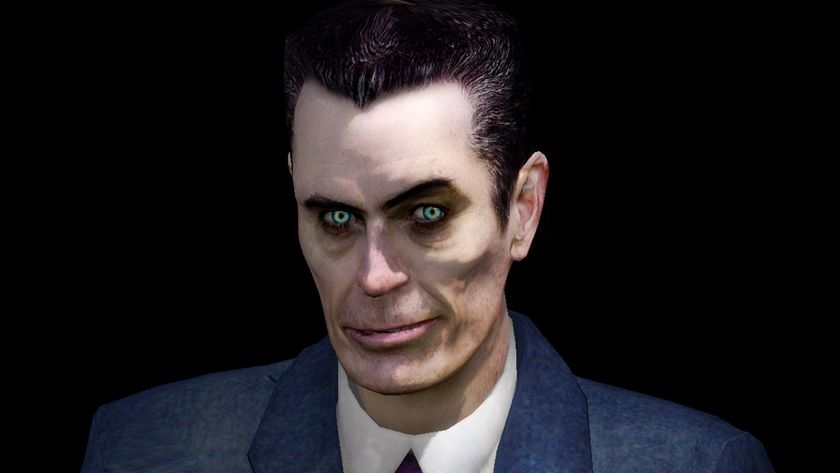
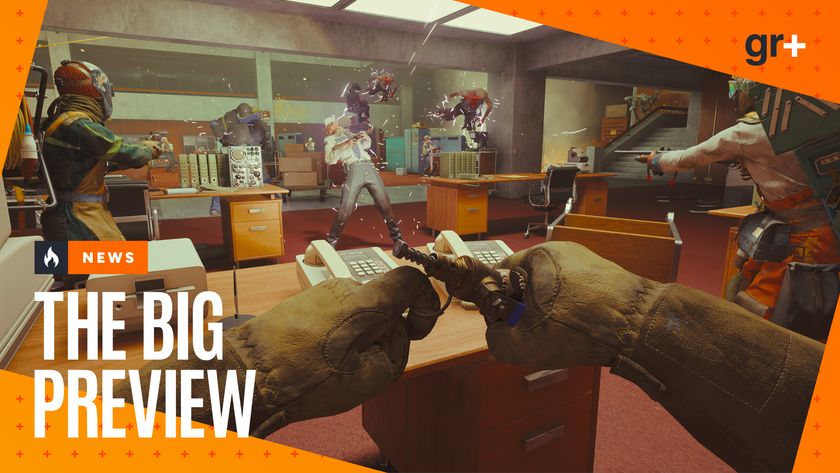

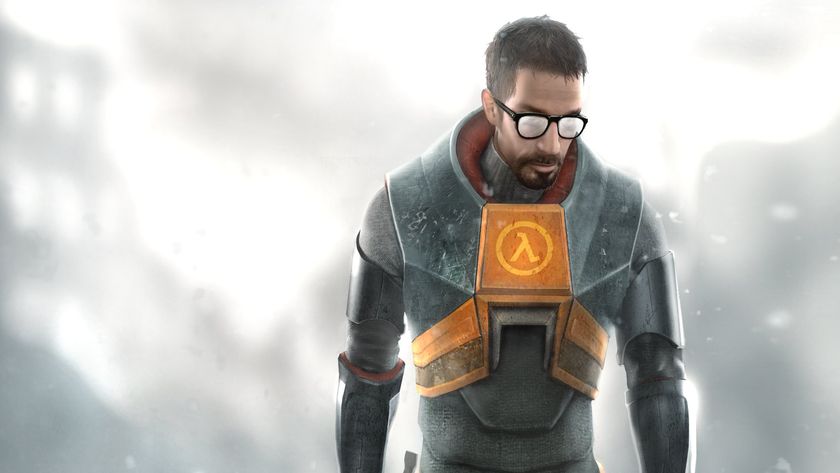
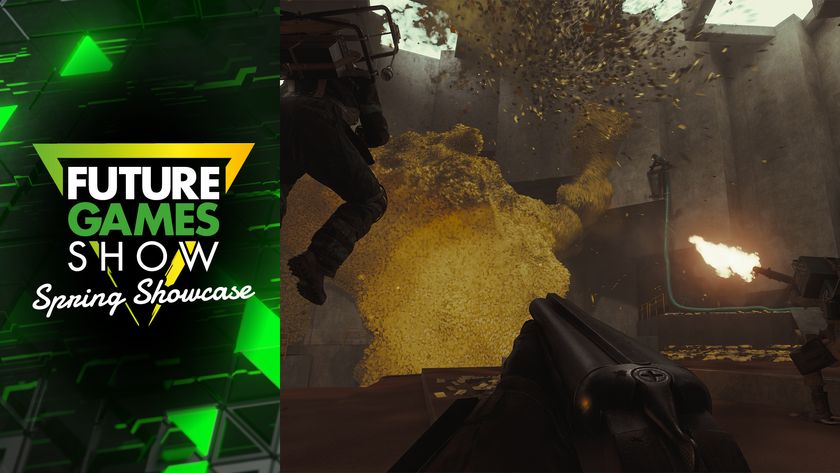






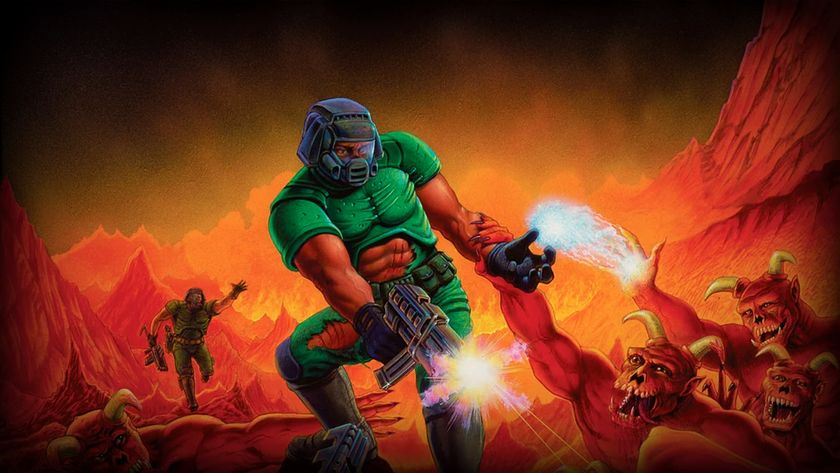
Pac-Man and Tetris are "the two most important games of all time," says Bethesda lead Todd Howard, with Doom and Super Mario Bros. standing as the most "influential"
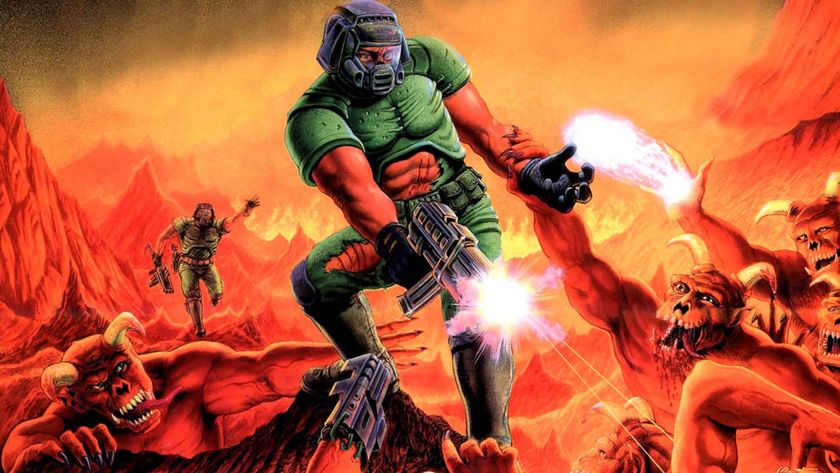
"You are incorrect": John Romero has been correcting Doom history for the past 4 years, and he's not about to stop now

